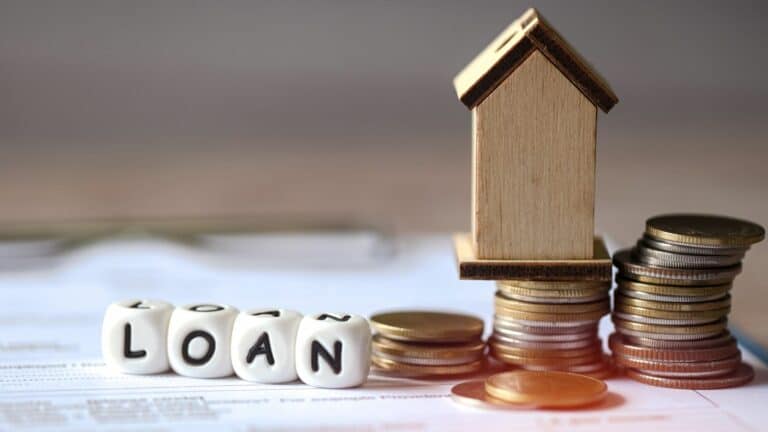These States Have the Most Personal Debt — Here’s How to Combat It

California has a ‘Debt Index’ of 35.28 – making it the state with the highest average personal debt amongst its residents.
That’s according to a study sponsored by eBank CreditDonkey that ranked each state, based on debt load held by their citizens. The study did an in-depth analysis of the average mortgage, student, automobile, and credit card debt in each state.

California
According to the data, Californians carry the highest debt burden. The state’s average mortgage debt per household stands at $422,909, likely influenced by California’s high housing prices, leading many residents to take out larger mortgages. Additionally, owning a car is often essential in many parts of the country, contributing to average vehicle debt in California reaching about $23,262, which ranks among the higher end compared to other states.
Hawaii
Hawaii ranks as the state with the second-highest debt burden. On average, Hawaiians carry about $6,343 in credit card debt. The increasing popularity of credit cards across the state bridges the gap in purchasing power when prices outpace income growth. Additionally, the prevalence of Buy Now, Pay Later services surged, enabling people to afford purchases that might otherwise be unattainable as a single upfront payment. Like California, Hawaii grapples with high housing prices, resulting in a substantial average mortgage debt of $387,277.
Maryland
Maryland ranks third in terms of debt burden. The state grapples with the highest average student loan debt of $43,116. As college costs and the overall cost of living continue to escalate, individuals need to borrow more to cover these expenses. Moreover, for many individuals unable to sufficiently pay down their balance, accruing interest perpetuates the growth of their debt even after completing college. Additionally, Maryland faces high average car debt around $22,809 per owner.
Alaska
Alaska holds the fourth position on this list, primarily due to having the highest average credit card debt in America. Charges add up to an average of $7,338 per person. The total credit card debt in the United States surpassed $1 trillion. Americans struggle with being priced out of life thanks to significant cost increases. Additionally, Alaskans contend with high levels of automobile debt, with the average amounting to $25,846.
Colorado
In fifth place, Colorado residents carry an average mortgage debt of $319,981 per household; among the higher figures nationwide. In addition to the substantial mortgage debt, Colorado residents struggle with high average student loan debt, amounting to $36,939.
Rise of Debt Is Multifaceted
According to Anna Ge, Director of Research at CreditDonkey, “The rise of debt in America is a multifaceted story, reflecting the evolving dynamics of the economic landscape. As the nation has grown, so too have the complexities of the financial systems. The causes for the surge in debt are rooted in a confluence of factors — from the pursuit of higher education to home-ownership aspirations and the challenges of rising costs across the board.”
Financial literacy, or the lack thereof, can also be a reason for increasing debt. Ge adds, “The ease of access to credit, while providing immediate relief, has contributed to a culture where spending can outpace income. This partly stems from consumerism, as many people are fueled by a desire for a higher standard of living, which has also played a role in credit cards becoming a ubiquitous financial tool.
“There are also more deep-rooted issues that are causing such drastic increases in debt, from rising costs of essentials such as gas and groceries to healthcare and living expenses (rent and bills); as costs continue to rise, many Americans are being pushed to the edge and require relief that inevitably results in the building up of debt.”
Pay Off Debt Faster
Debt in this country has skyrocketed in recent years. As Ge notes, there are deep-rooted issues why debt is increasing drastically. However, there are ways to combat this.
Robyn from A Dime Saved suggests pinpointing a target. “One of the best ways to pay down debt is to set a specific daily, weekly, or monthly goal. Do your best to find an “extra” small amount of money to throw into your debt. Every little bit counts. For example, you can use coupons or cashback to save a few dollars towards your debt. These small amounts will add up over time, on top of your monthly payments or other large sums of money you can put toward your debt.”
Anika Jindal, with the blog What Anika Says, adds, “One should set up a bi-weekly payment instead of a monthly payment. This helps make extra monthly payments in a year, which go towards the principal. Plus, it helps reduce interest burden since the average daily balance is reduced.”
Consolidate Debt & Start a Side Hustle
Looking at your finances can also shed light on your debts and how you can pay them off faster.
Chris from Financially Well Off also has a suggestion or two. “Consolidate all debt into the least amount of accounts. First, sign up for a no-interest credit card for 18 months and transfer all your debt here. Then, set a timeline to pay off your debt. Ideally, you’d want to pay it off and avoid a high interest. If you can’t get approved for a new credit card or want to avoid applying, start by paying off the lowest debt first. There are many ways to pay off debt. Having a timeline and a support group will make the process easier.”
Paying off debt is often easier said than done, especially if funds are lacking. Jason from My Money Chronicles has an idea that may help. “My tip for how to pay off debt is to start a side hustle. One of my favorites is selling items on eBay, Mercari & Poshmark. The money made from those sales can be applied to your debt.”
Written by Arnie Nicola, Originally published on mediadecision.com






